Steel Products
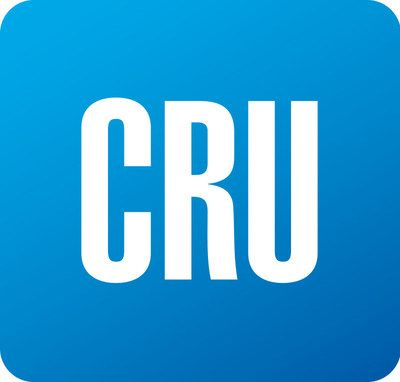
CRU: Longs Prices Fall as Covid-19 Pushes Demand Down in Asia
Written by James Campbell
August 26, 2021
By CRU Principal Analyst James Campbell, from CRU’s Steel Long Products Monitor
Long product prices have fallen in most regions this month as demand was lower than expected. Part of the weakness was seasonal, but parts of Asia were also affected by further outbreaks of Covid-19. Except for the USA, the tight supply seen in H1 has eased. Some markets are even oversupplied. For now, this includes China. However, production cuts in China are gathering pace and this could quickly change, with global implications.
Overall, the Global Long Products Price Indicator (CRUspi Longs) fell by 1.7% m/m to 276.3 in September 2021. Price falls were assessed in Europe and Asia. U.S. rebar and structural prices were stable, but wire rod increased.

Demand Weaker than Expected – Even in China
Demand was less than expected over the last month and this has affected buying activity in many regions. Of most note is the change in China. Recent economic indicators were weaker than anticipated, suggesting only some of the slowdown in demand currently seen is seasonal. Demand in the country has fallen more than supply. This is noteworthy as domestic supply in China is currently restricted.
The previously announced output cuts announced by the government are now being enacted by provincial governments. Supply has also been restricted by unattractive margins and power shortages. Further restrictions were announced recently in Tangshan around the winter Beijing Olympics. It looks unlikely these restrictions will disappear in the near term.
Covid-19 Strikes Again
Covid-19 was a major factor affecting demand in China. China was not alone. Demand in Southeast Asia has been so weak that production in some Vietnamese mills was driven by export orders alone. This resulted in increased availability of billet, lowering costs for rerollers. Covid-19 restrictions had a similar effect on construction activity in Iran and the result the same: increased availability of billet.
Widespread Price Falls
Weaker demand and increased billet availability led prices lower in many regions. Overall, of the prices we publish, the majority, 67%, fell. Only 15% increased this month, compared to 87% last month. The main price rises to note were for rebar in India, wire rod in China and wire rod/merchant bar in the USA.
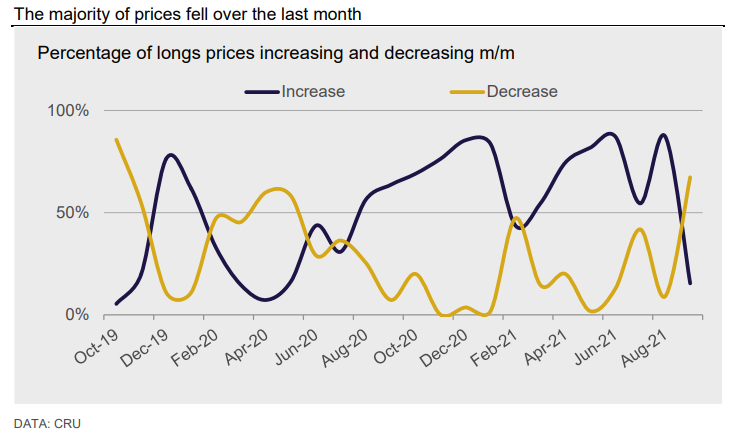
The USA remains the strongest market and wire rod remains the strongest product: U.S. wire rod prices are now $600 /t higher than those in Asia. German prices are also significantly higher than those in Asia, although the premium is half that of the U.S. market.
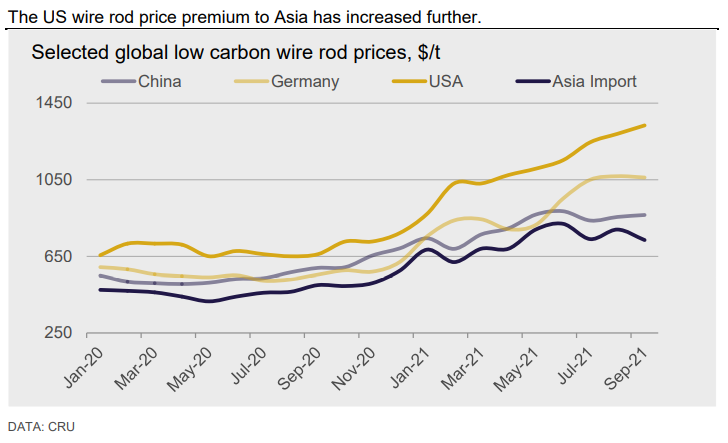
Outlook: Chinese Policy Could Disrupt the Market
Our current base case is for lower prices in the final quarter of 2021; we are close to the peak in Europe and the USA. In the USA, supply of wire rod is likely to remain tight in the near term. Increases to capacity are being invested in but are unlikely to have a meaningful impact until late Q4. European buying activity is usually strong in September, supported by restocking. This year, that restocking looks to be smaller as previously ordered material – including arrears – is delivered. The stock cycle could have a bigger impact in Q4 than domestic supply availability, particularly as the winter approaches.
The future direction on price is highly uncertain, particularly in Asia. Much depends on how China balances supply cuts with falling demand. An imbalance either way would likely have global implications to finished steel prices, semi-finished prices and raw materials.
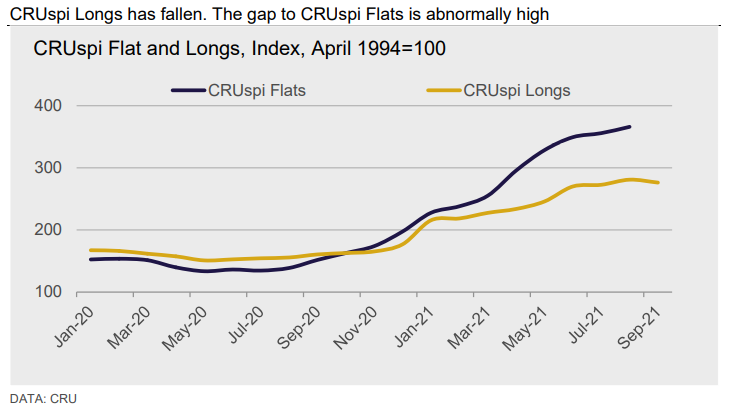
Request more information about this topic.
Learn more about CRU’s services at www.crugroup.com
James Campbell
Read more from James CampbellLatest in Steel Products

SMU flat-rolled market survey results now available
SMU’s latest steel buyers market survey results are now available on our website to all premium members. After logging in at steelmarketupdate.com, visit the pricing and analysis tab and look under the “survey results” section for “latest survey results.” Past survey results are also available under that selection. If you need help accessing the survey results, or if […]

CRU tariff webinar replay now available
CRU’s latest webinar replay on how Trump’s tariffs affect the global steel market is now available on our website to all members. After logging in at steelmarketupdate.com, visit the community tab and look under the “previous webinars” section of the dropdown menu. You’ll find not only this special CRU webinar but also all past Community […]
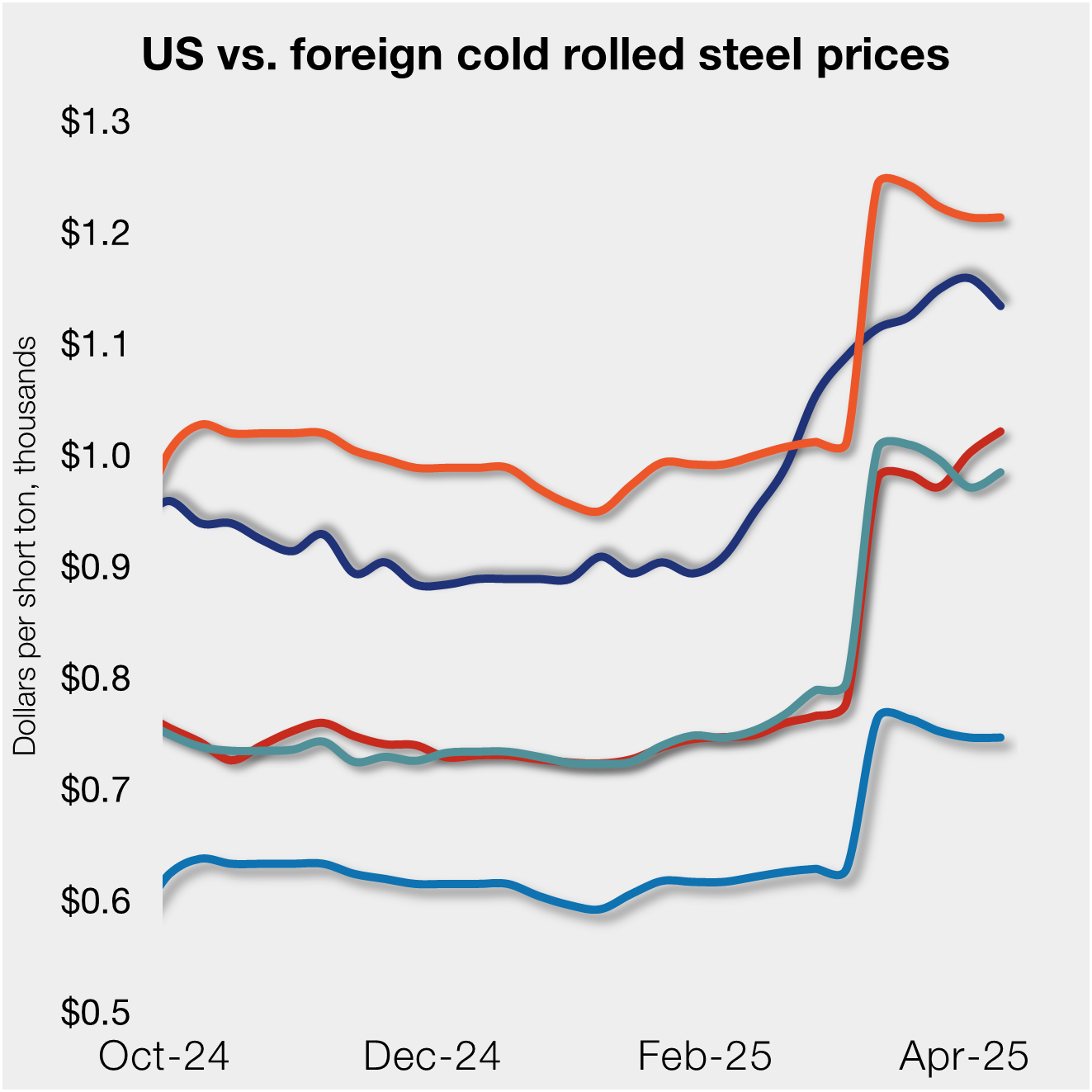
US, offshore CRC prices diverge
US cold-rolled (CR) coil prices declined this week, slipping for the first time since early February. Most offshore markets deviated, moving higher this week.

Construction growth slowed in March on tariff woes: Dodge
The decline comes after reaching a record high in January to kickstart the year.
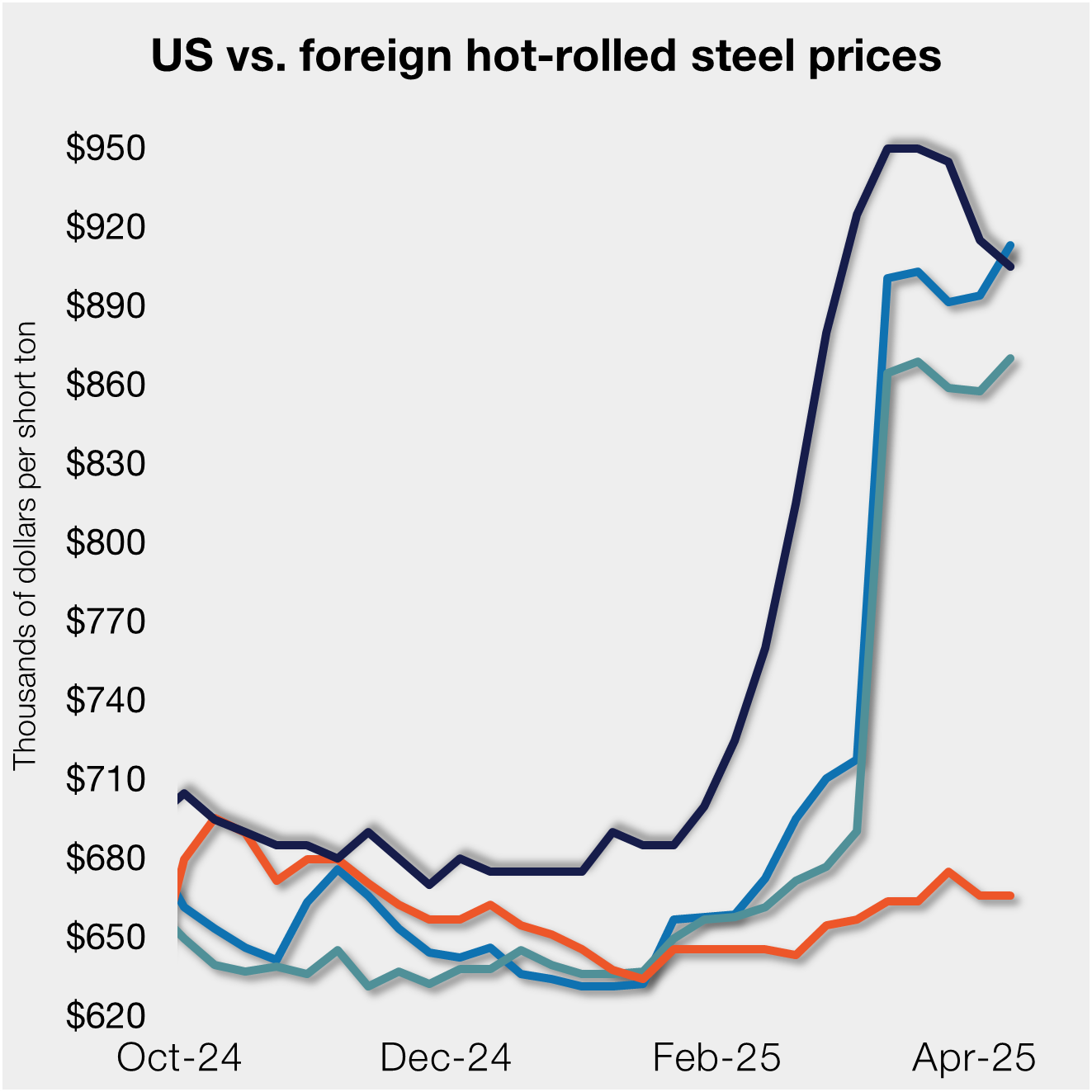
Return of S232 zapped gap between US and EU HR prices, Asian HR remains cheaper
Domestic hot-rolled (HR) coil prices declined this week for a third straight week. Most offshore markets bucked the trend and gained ground. Uncertainty in the US market around tariffs, especially after “Liberation Day,” caused US prices to slip as buyers moved to the sidelines. It’s unclear to date whether the 90-day pause on the more […]
